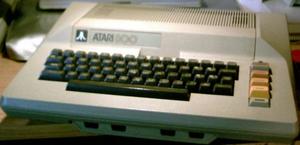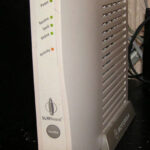Information technology has experienced many changes since 1980, with computer systems and online communication becoming vastly different. Some past trends moved technology toward where it is today, while others became reversed or were short-lived. Read on for a summary of major information technology trends which have occurred in the past and are taking place in current times…
Early 1980s: Personal computers were becoming widespread for the first time, and some basic models were available for $100-200, like the Commodore VIC-20 and Timex/Sinclair 1000. Telephone modem technology was starting to be used to connect to online information services and bulletin board systems. Many computers were designed to directly connect to a television for audio/video output. One of the trends which was relatively short-lived was to make video game systems which could be upgraded into computer systems. Another of the trends which extended from the late ’70s through the mid ’80s was that a large number of computer owners learned the “BASIC” programming language (it was built-in on many computers) and could create their own programs; many computer manuals (Commodore, T/S 1000, Atari 800) provided detailed information on learning it.
Mid-1980s: In the mid ’80s, one of the major trends in computer information storage technology was to begin moving away from cassette tapes, 8″ floppy disks, and cartridges, in favor of 5.25″ diskettes and hard disks. Integrated keyboards became less common, being substituted with easier-to-replace detachable keyboards (except for laptops). Most personal computers now had color graphics capability, although less expensive B/W monitors were still used for some of them. Expansion cards and chips started becoming compatible with more than one computer model, but more and more of them required opening up the computer to install. Windows 1.0 was released in 1985, according to wikipedia.org, but failed to gain much popularity. Many computers came equipped to use joysticks, but needed an upgrade to use a mouse – one of the past information technology trends which would be reversed later on.
Late-1980s: Trends during this time period may have changed information technology more than in any of the years since then. More and more computers were IBM-compatible rather than only being able to exchange information and programs with other computers from their own brand name (as most Atari, Commodore, and early Texas Instruments computers did). Fewer computers were sold with television output built-in. The use of graphical user interfaces started to become somewhat common, including Windows 2.0, Tandy DeskMate, and Atari GEM. Smaller 3.5″ floppy disks began to replace the 5.25″ flexible diskettes. Some computers which weren’t IBM compatible had become rather inexpensive; the 1989 Radio Shack catalog listed new TRS-80 Color Computer III systems for $199. New IBM-compatibles were still sold with either 5.25″ or 3.5″ floppy drives; CD-ROM technology was a very expensive add-on and hard disks often weren’t standard. More computers were coming equipped to use a mouse or trackball; just about all were by the mid-1990s.
Early 1990s: Information technology trends during this time period included increasing use of online information services (like AOL, PC-Link, CompuServe, etc), improving video quality, and digitized sound. Most new computers had at least 16-color graphics adapters, including EGA/TGA/MCGA/VGA, while some featured 256-color VGA graphics. Computer models without a hard disk were becoming less common; a substantial amount of software packages started to require hard disks, which can store far more information than diskettes. Most computers which were not either Apple or IBM compatible stopped being manufactured, including the TRS-80 series and Atari ST systems, despite past popularity. More emphasis was being put on user-friendly design, with some computers like the Tandy 1000 RL and IBM PS/1 being designed specifically for first-time home computer owners; related trends included making compact, quiet desktop computers and built-in operating systems held in ROM. CD-ROM drives were available, but still rather expensive. The 1992 Radio Shack catalog listed an internal CD-ROM drive for $399, and an external unit for $499; the computers featured in the catalog all had 3.5″ disk drives and built-in mouse ports by this year.
Mid/Late-1990s: The internet became more popular, with online information services like America Online disappearing or transforming into internet service providers. Hard disk storage capacities, modem speeds, and memory sizes increased rapidly, while 5.25″ and low-capacity (720KB) 3.5″ disks largely became things of the past. The use of inkjet technology in printers increased and color printing became more widespread. One of the less desirable trends was that of many computers becoming larger and heavier. Tall, tower-style computer systems began to replace traditional flat desktop-style units. Graphical user interfaces like Windows 3.x/95/98 and Mac OS started being used on just about all computers, with not many still utilizing command-line operating systems.
2000-Current: Some of the current information technology trends which began in recent years include increased use of wireless technology, higher-speed internet connections, and video game systems with computer-like hardware technology and capabilities. Tower-style computers remain most common, but desktop-style systems have become slightly more widespread as they were in the past, and many people now use portable laptop/notebook units. More and more homes and businesses are gaining access to high-speed internet services like DSL, satellite, and cable-based systems. Wireless technology is being used for an increasing number of accessories, local area networks, and internet access systems. Other current trends in technology include the increasing use of LCD monitors, high-capacity portable information storage devices, open source free software, and USB computer accessories.





